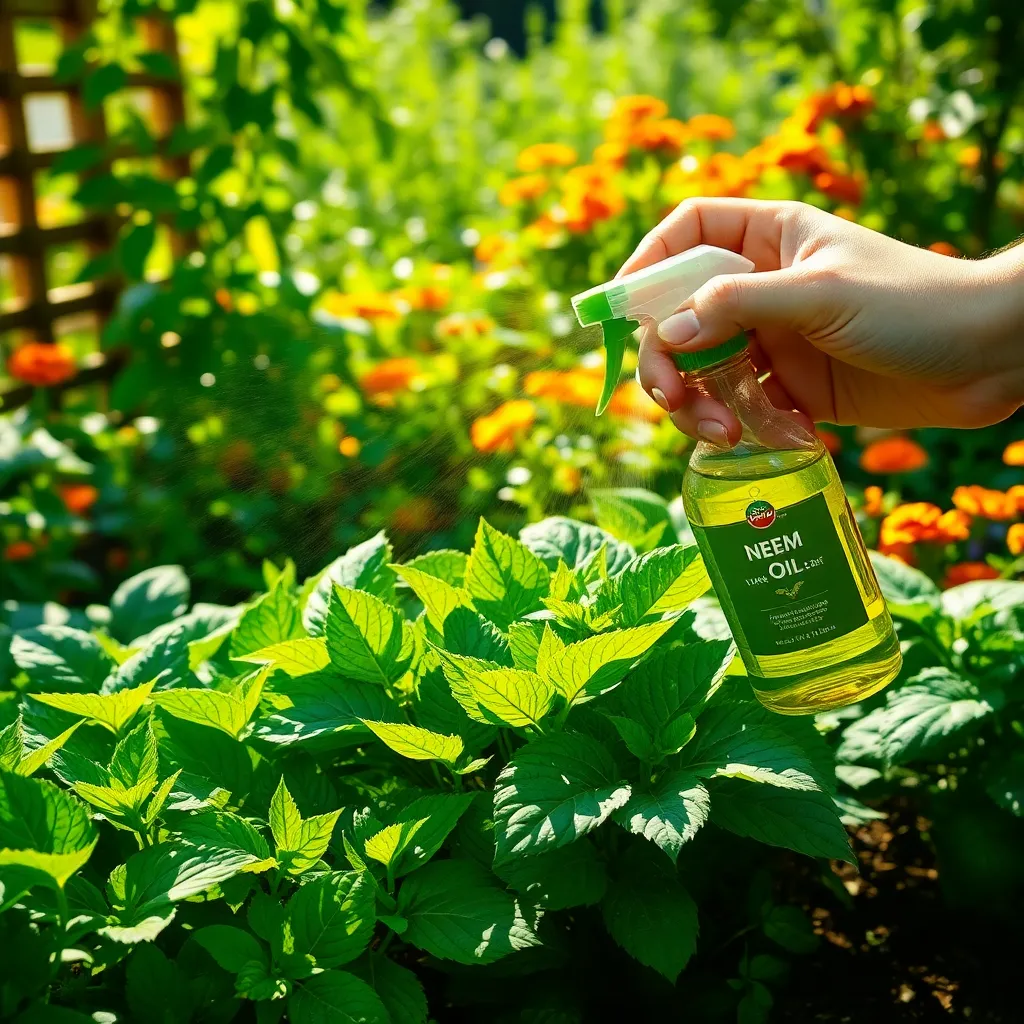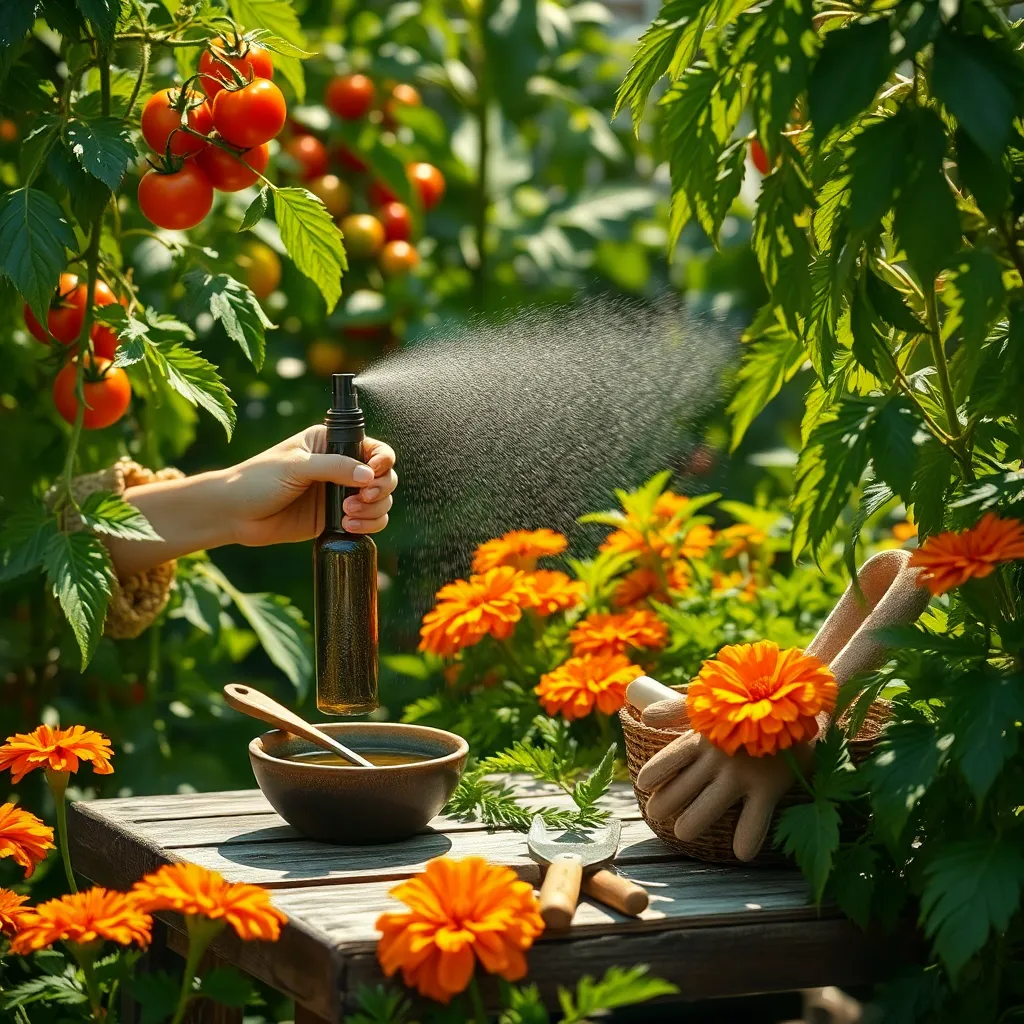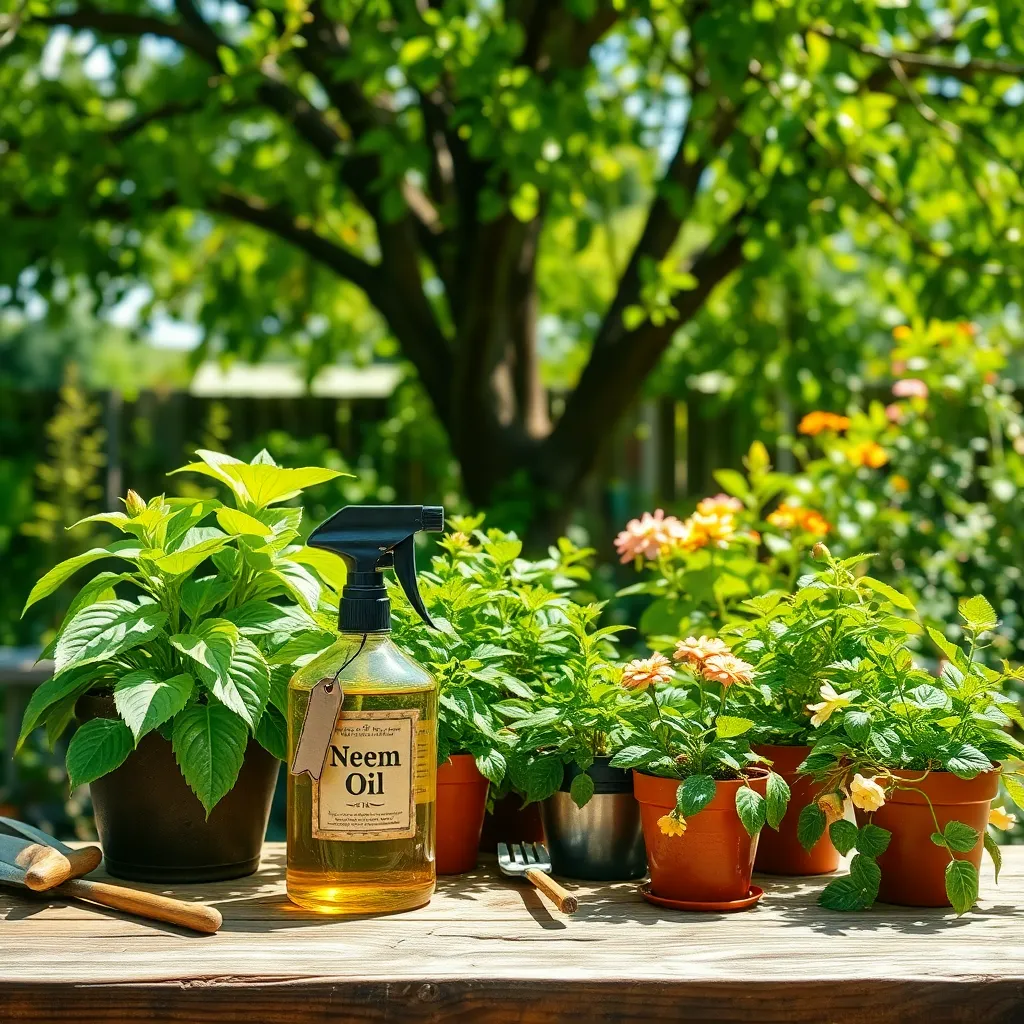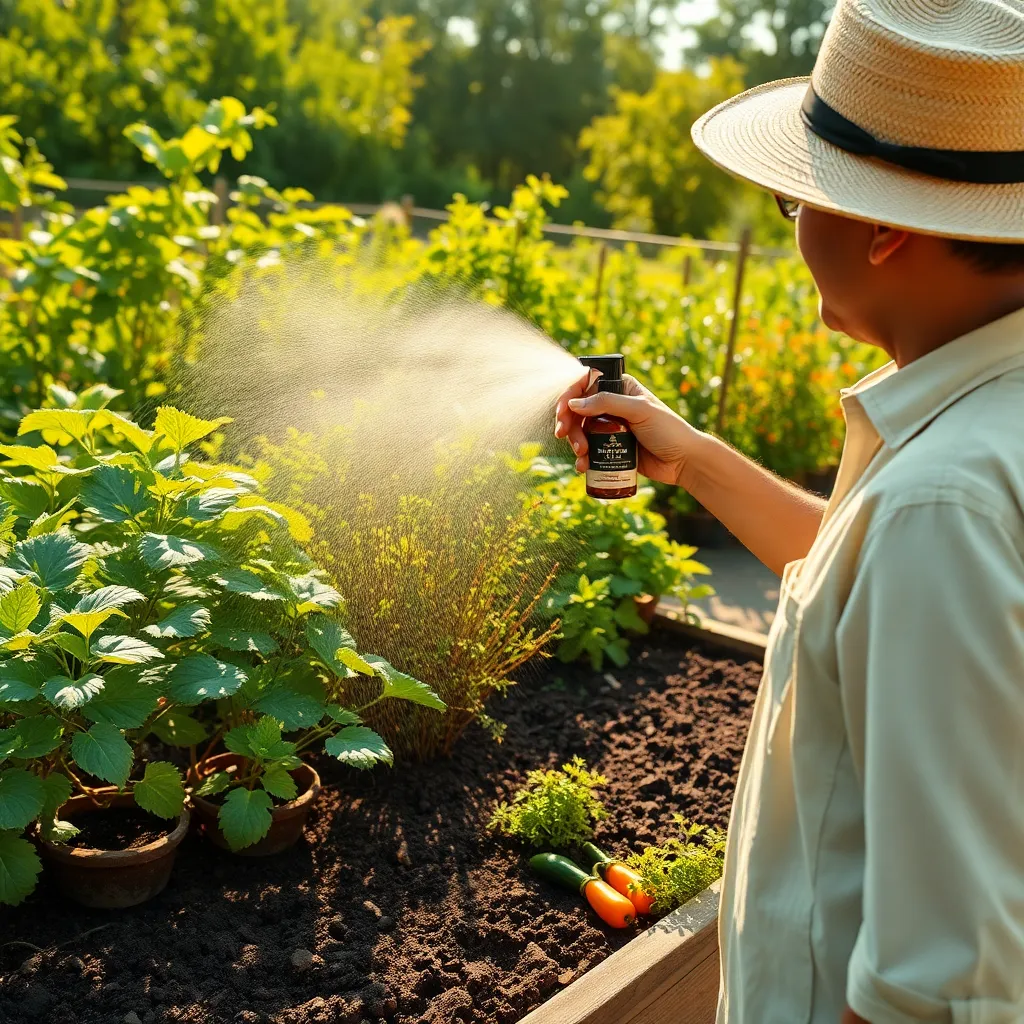Neem oil—a golden elixir from the seeds of the neem tree—has been a cherished secret in organic gardening for centuries. Whether you’re just planting your first seedlings or have a garden that flourishes year-round, understanding the power of neem oil can transform your gardening experience. This mystical oil acts as a natural pest repellent, a gentle fungicide, and even a soil conditioner, making it an invaluable ally in cultivating a thriving garden.
In this article, we’ll unravel the wonders of neem oil, offering insights that cater to both the novice and the seasoned gardener. You’ll learn how to effectively use neem oil to protect your plants from pests without harming beneficial insects, ensuring a balanced ecosystem in your garden. We’ll also delve into the specifics of application techniques and the timing to optimize your plants’ health. By the end of this journey, you’ll not only feel empowered to incorporate neem oil into your routine but also gain a deeper appreciation for this natural remedy.
Benefits of Neem Oil for Plants

Neem oil is a versatile tool for gardeners, offering a natural solution to pest control. By using neem oil, you can reduce the need for synthetic pesticides, making your garden more eco-friendly.
One of the key benefits of neem oil is its ability to target a wide range of insect pests, including aphids, spider mites, and whiteflies. For effective results, apply neem oil in the early morning or late afternoon to avoid leaf burn from the sun.
Beyond pest control, neem oil also acts as a fungicide, helping to prevent common fungal diseases like powdery mildew and black spot. To use neem oil as a fungicide, mix it with water and spray it on affected plants every seven to 14 days.
For those dealing with specific pest infestations, a more concentrated neem oil solution can be used as a spot treatment. Always test the solution on a small part of the plant first to ensure it does not cause any damage.
How Neem Oil Fights Pests

Neem oil is a powerful ally in the fight against garden pests due to its natural insecticidal properties. Azadirachtin, a compound found in neem oil, disrupts the life cycle of insects, making it difficult for them to grow and reproduce.
This oil is particularly effective against soft-bodied insects like aphids, spider mites, and whiteflies. By applying neem oil regularly, gardeners can reduce pest populations without harming beneficial insects such as ladybugs and bees.
To use neem oil effectively, mix it with water and a mild liquid soap to create a spray solution. Apply the mixture in the early morning or late afternoon to prevent leaf burn from sunlight exposure.
Consistency is key when using neem oil to manage pests. Reapply every 7 to 14 days, depending on the severity of the infestation, ensuring thorough coverage of the plant’s leaves and stems.
- Mix 1 teaspoon of neem oil with 1 quart of warm water and a few drops of mild dish soap.
- Shake well before applying to ensure even distribution.
- Test a small area of the plant before full application to check for any adverse reactions.
Applying Neem Oil Effectively

To apply neem oil effectively, it’s essential to prepare a proper solution by mixing it with water and a small amount of mild liquid soap. Use a ratio of one tablespoon of neem oil and one teaspoon of soap per gallon of water for optimal results.
Once your solution is prepared, transfer it to a spray bottle for easy application. It’s crucial to shake the bottle well before each use to ensure the oil is evenly distributed throughout the mixture.
Apply the neem oil solution in the early morning or late afternoon to avoid strong sunlight, which can cause leaf burn. Be sure to spray both the tops and undersides of leaves, as pests often hide in these less visible areas.
For gardeners dealing with severe infestations, consider applying neem oil every 7 to 14 days until the problem is under control. Consistent application is key, but remember to avoid overuse, which can stress your plants.
Safety Tips for Neem Use

When using neem oil in your garden, it’s important to prioritize safety for both yourself and your plants. Always wear gloves and long sleeves when handling neem oil to prevent skin irritation.
Ensure that you apply neem oil during the cooler parts of the day, such as early morning or late afternoon. Applying it during hot, sunny periods can cause leaf burn, which can damage your plants.
For effective pest control without harming beneficial insects, target the application of neem oil to the affected areas. Be careful to avoid spraying flowers, as this can deter pollinators and disrupt your garden’s ecosystem.
Store neem oil in a cool, dark place to maintain its effectiveness and prevent degradation. Label the container clearly and keep it out of reach of children and pets to ensure safety in the home.
Integrating Neem Oil in Routine Care

Integrating neem oil into your routine plant care can significantly enhance your garden’s health. Start by creating a schedule to apply neem oil every seven to fourteen days, depending on your garden’s needs and the pest pressure.
To ensure effective results, it’s crucial to apply neem oil during the cooler parts of the day. This timing prevents leaf burn and allows the oil to penetrate thoroughly without evaporating too quickly.
When preparing your neem oil spray, always mix it with water and a few drops of mild liquid soap. The soap acts as an emulsifier, helping the oil and water mix, which is essential for even distribution on plant surfaces.
For best results, apply the mixture using a spray bottle, ensuring that you cover both the tops and undersides of leaves. This thorough coverage is key to disrupting the life cycles of pests like aphids and mites.
Monitor your plants after application to observe any adverse reactions, adjusting the concentration if necessary. Advanced gardeners might experiment with varying concentrations to tackle specific pest problems more aggressively.
In addition to pest control, neem oil can also serve as a preventive measure against fungal diseases. Regular use can help protect plants from conditions like powdery mildew and black spot, promoting overall plant health.
Remember to shake the mixture well before each use, as neem oil can separate from water over time. This ensures that every spray is consistent and effective, maximizing the benefits for your garden.
Conclusion: Growing Success with These Plants
In summary, thriving relationships, much like a flourishing garden, require consistent care and attention. This article explored five key concepts: the importance of nurturing trust and communication, setting healthy boundaries, fostering mutual growth, embracing vulnerability, and practicing gratitude. Each concept parallels the use of neem oil in a garden—an organic method to nurture and protect what matters most.
Now, take the immediate step of focusing on one of these concepts today. Whether it’s having an open conversation, setting a boundary, or expressing gratitude, small actions can yield significant growth in your relationship. By prioritizing these principles, you are planting seeds for a healthier and more fulfilling partnership.
To ensure these insights are always within reach, bookmark this article as a handy reference for navigating your relational journey. Remember, successful relationships are cultivated through ongoing effort and commitment. As you apply these concepts, envision a future where your relationship blooms with understanding, resilience, and joy. Together, let’s sow the seeds of connection and watch them grow into a beautiful, lasting bond.

